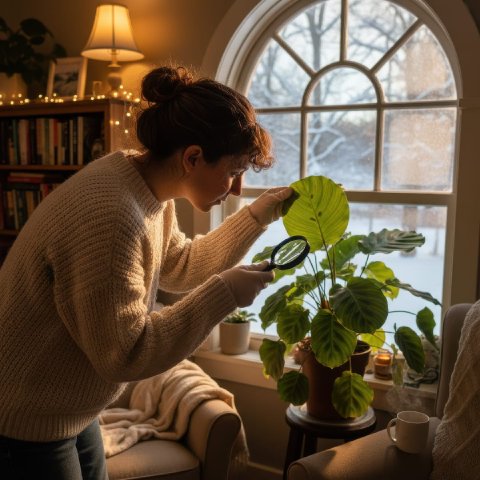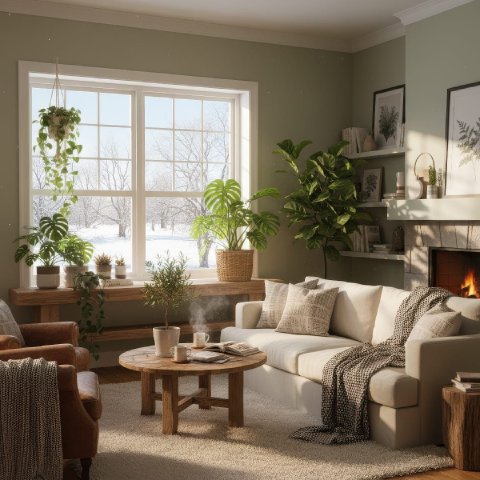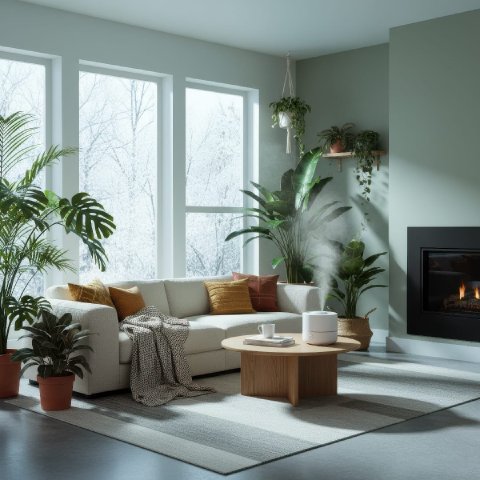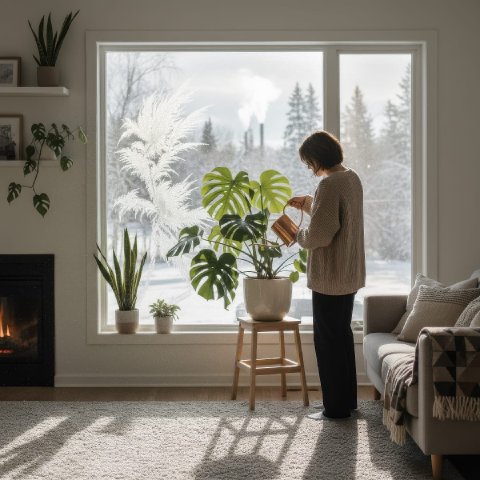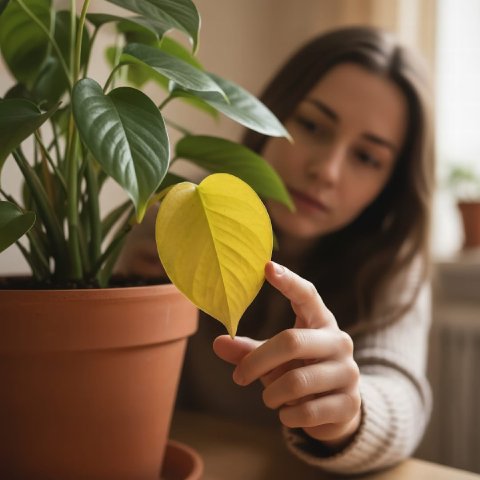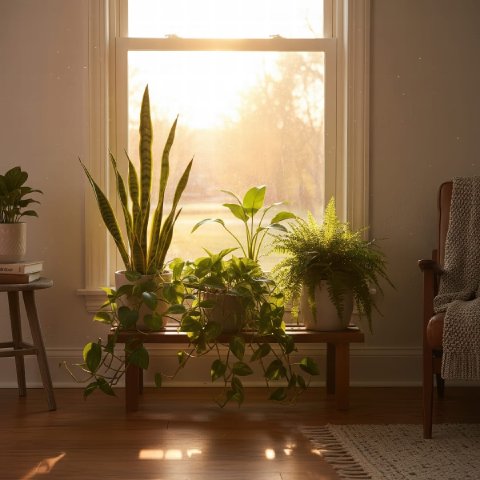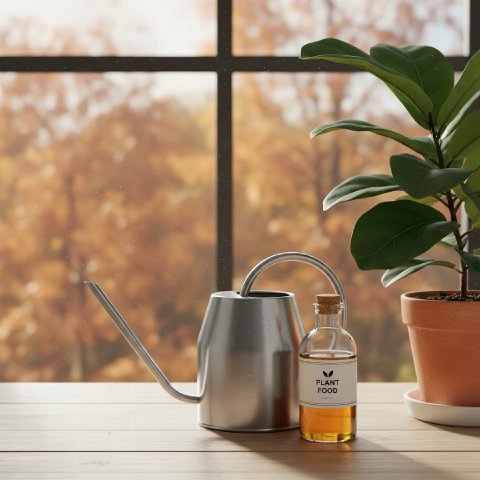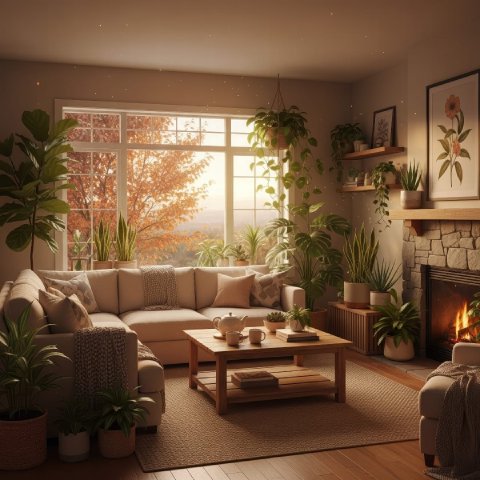🪴 In This Guide 🪴
🌤️ Why Winter Light Is Different
In winter, it’s not just the shorter days that cause problems. The sun’s angle changes, so light travels through more atmosphere before reaching your plants. It’s weaker, softer, and more easily blocked by clouds or dirty windows.

A spot that felt bright in summer might feel dull in winter, especially for high-light plants like succulents, citrus, or fiddle leaf figs. They start to look “tired,” lose color, or stop growing altogether.
If your plants seem lifeless, it’s rarely your fault-it’s just physics. They’re conserving energy, not dying.
💡 Easy Ways to Brighten Things Up
You don’t need a grow tent to make winter work. Small changes in placement and routine can dramatically improve your plants’ light intake.
1. Move Plants Closer to the Light
A few feet makes a big difference. South and west-facing windows usually give the strongest light in winter, while east windows work well for gentle morning light.
Just keep leaves a few inches away from cold glass to avoid frost damage, a common issue discussed in our guide to keeping plants warm. A small riser or tray helps create distance.
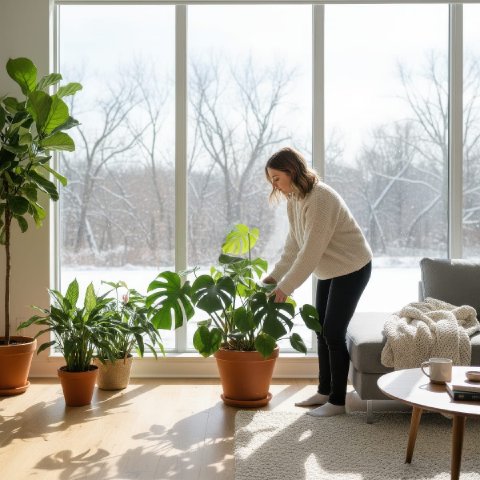
2. Clean Windows and Leaves
Dust and grime block more light than most people realize-sometimes up to 20%. Wipe down your windows and gently clean your plants’ leaves with a soft, damp cloth every few weeks.
Clean glass and shiny leaves mean more light reaches where it matters.

3. Use Mirrors or Light Walls
Mirrors or white backgrounds reflect light back onto your plants.
If you’ve got a dark corner, hang a mirror opposite the window or place plants against a pale wall to bounce extra brightness around.
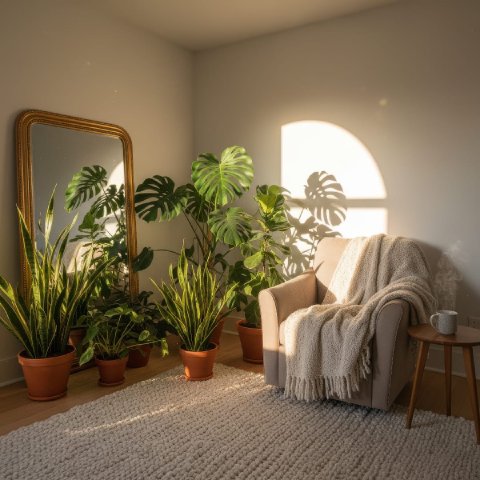
4. Add Grow Lights
If you still don’t get enough sun, supplement with artificial light. A full-spectrum LED bulb works perfectly-no need for professional setups.
Keep it 8–12 inches above your plants and run it for 10–12 hours a day. A timer helps keep the cycle consistent.

Signs of too much light include bleached leaves or crispy tips, so adjust the distance if needed.
📊 How Much Light Is Enough?
| Plant Type | Light Needed | Example Intensity |
|---|---|---|
| Low light (ZZ Plant, Snake Plant) | 50–250 foot-candles | Dim corner or north window |
| Medium light (Philodendron, Pothos) | 250–1,000 foot-candles | East or bright indirect light |
| High light (Succulents, Fiddle Leaf Fig) | 1,000–2,500 foot-candles | Direct sun or under grow lights |
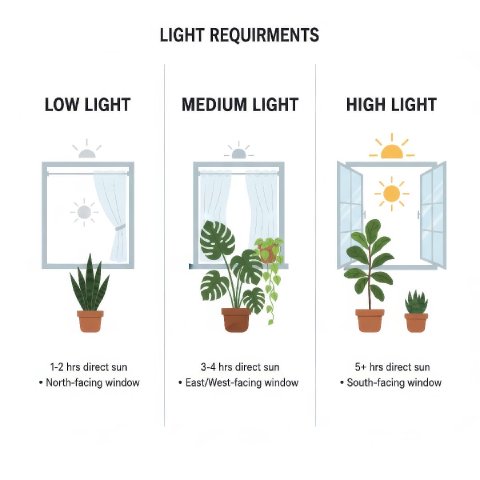
You can use a light meter app on your phone-it doesn’t need to be precise. You just want to notice which spots get stronger readings throughout the day.
🌱 Balancing Light and Rest
Don’t panic if your plants slow down or stop growing. Some, like ZZ plants or Sansevierias, are built for low light and simply take a winter break.
Others, like succulents or citrus, really do need bright light to maintain color and shape. If they start stretching or leaning dramatically, move them closer to light or add a small grow light.

Winter light isn’t about pushing growth-it’s about maintaining health.
Keep things steady, avoid big moves, and your plants will bounce back beautifully when spring arrives.
❓ Frequently Asked Questions
How can I increase light for houseplants in winter?
Move plants closer to south or west-facing windows, clean both windows and leaves, and use a full-spectrum LED grow light for 10–12 hours daily.How do I know if my plant isn’t getting enough light?
Watch for slow or leggy growth, pale leaves, and plants leaning toward windows-these are classic signs of low light.Can houseplants get sunburned in winter?
It’s rare, but leaves can still scorch if pressed against cold glass under strong sunlight. Keep some space between leaves and the window.What kind of grow light should I use?
A simple full-spectrum LED bulb is enough for most houseplants. Position it 8–12 inches above the foliage for best results.Is it normal for plants to stop growing in winter?
Yes. Many houseplants go semi-dormant during short days. Your goal is to maintain healthy leaves until growth resumes in spring.📚 Related Reading
For a complete seasonal overview, check out our Winter Houseplant Care Checklist.
You might also like:
